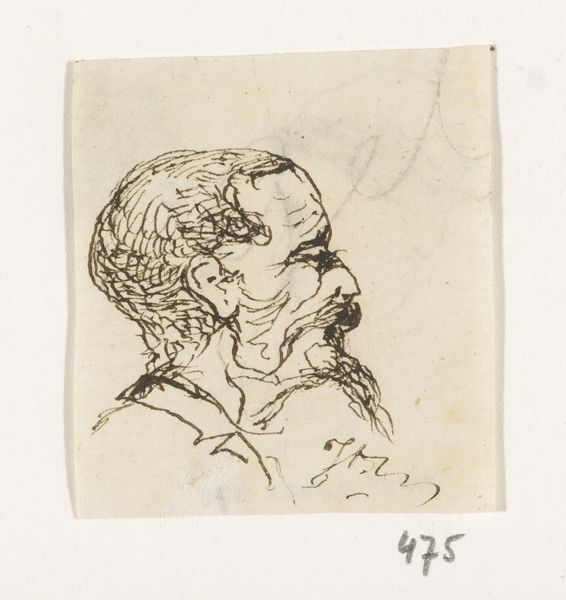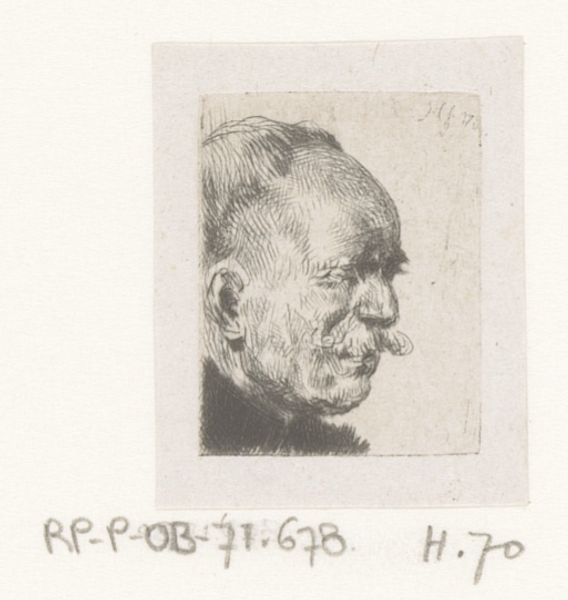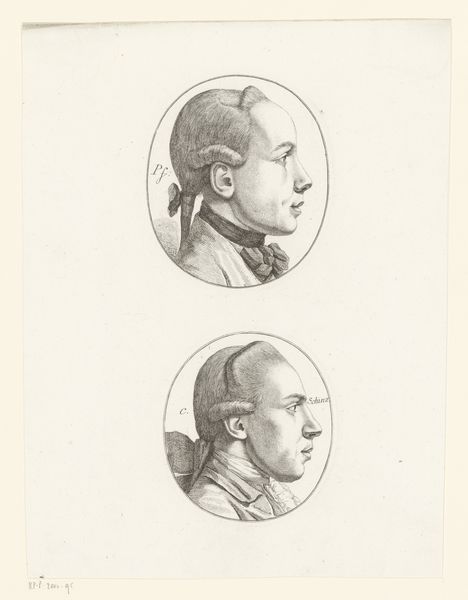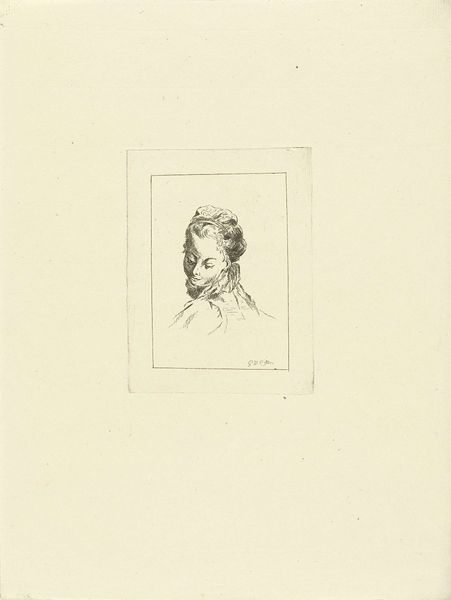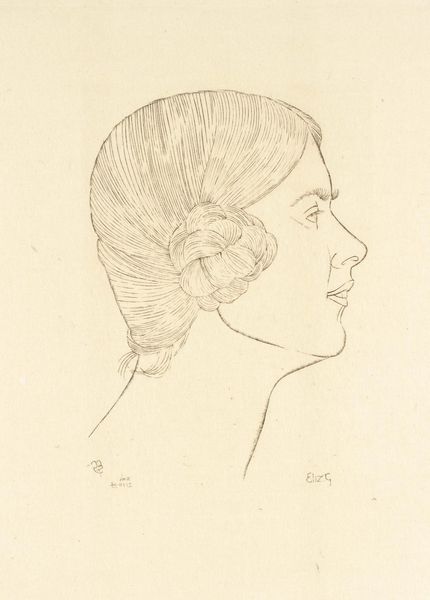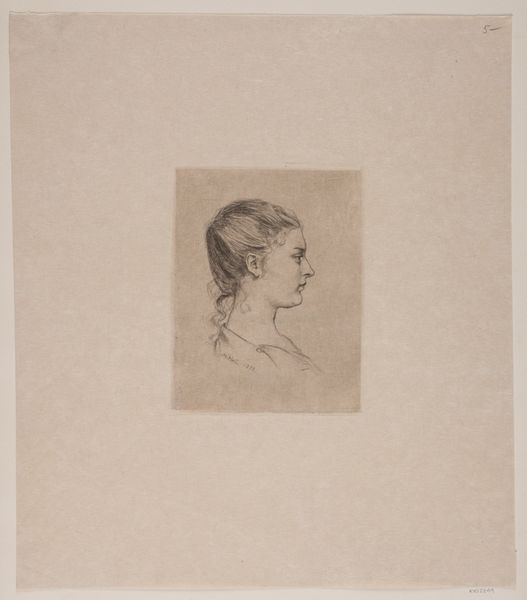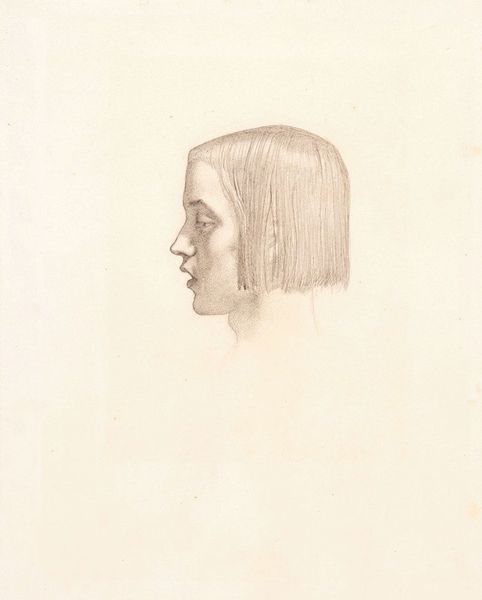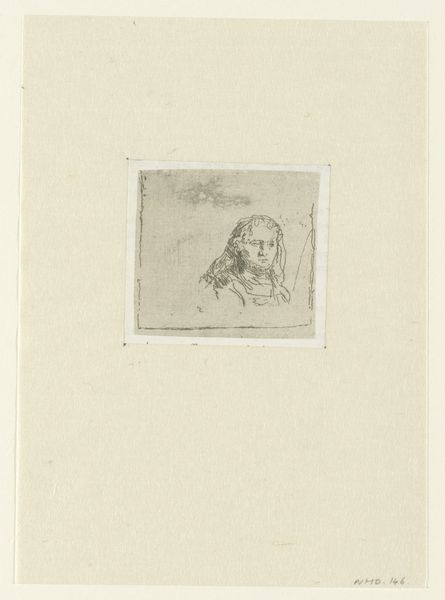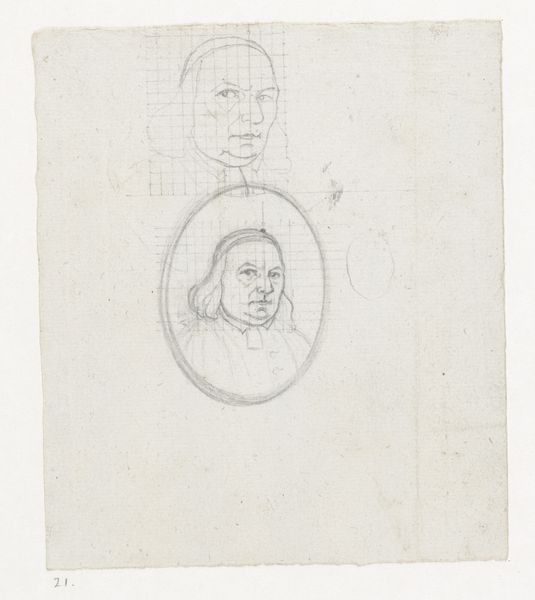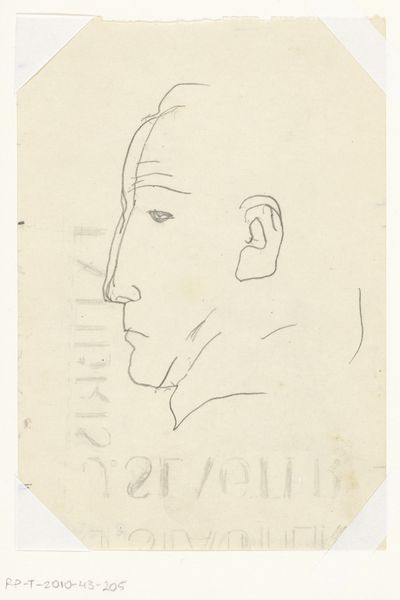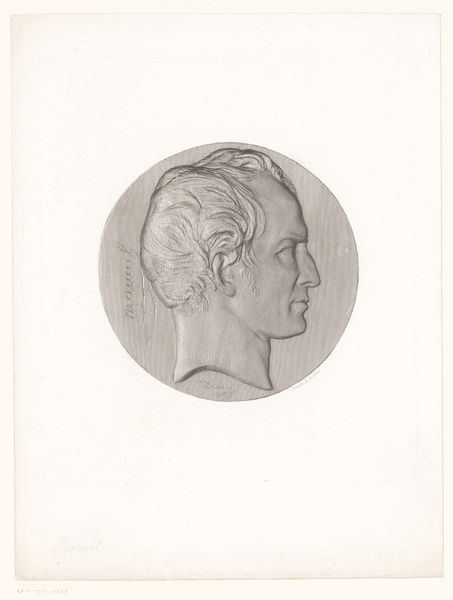
Dimensions: height 21 mm, width 20 mm
Copyright: Rijks Museum: Open Domain
Editor: This is "Head of a Man with a Wig," a print made after 1769, and the artist is unknown. It's an etching and engraving. It strikes me as very formal, but also somewhat faded and distant. How do you interpret this work? Curator: It's a compelling piece, isn't it? These portraits, ubiquitous in the Baroque and Academic art styles, often served specific ideological functions. Consider the wig, for example. It's not just a fashion statement. It's a symbol of power, status, and adherence to a very specific, often exclusive, social order. Editor: So it's not just about appearances? Curator: Precisely! Think about who typically commissioned and consumed these images. The elite, the ruling class. This portrait, while seemingly simple, reinforces their dominance and projects a certain image of authority. How might this image have functioned to maintain societal hierarchies? Editor: It's like a visual declaration of belonging to a specific social stratum. Almost like a uniform. Curator: Exactly. And the anonymity of the artist is also telling. It reflects the emphasis on the subject, rather than the individual artistic expression. It makes you wonder about the power dynamics at play and who benefits from these representations. Can art be truly separated from its context, and should it be? Editor: That’s a perspective I hadn't considered. It is fascinating how a simple portrait can be loaded with so much social and political significance. I learned a lot. Thanks. Curator: My pleasure! Remember, art history isn't just about dates and styles; it’s about uncovering the stories and power structures embedded within the art itself.
Comments
No comments
Be the first to comment and join the conversation on the ultimate creative platform.

